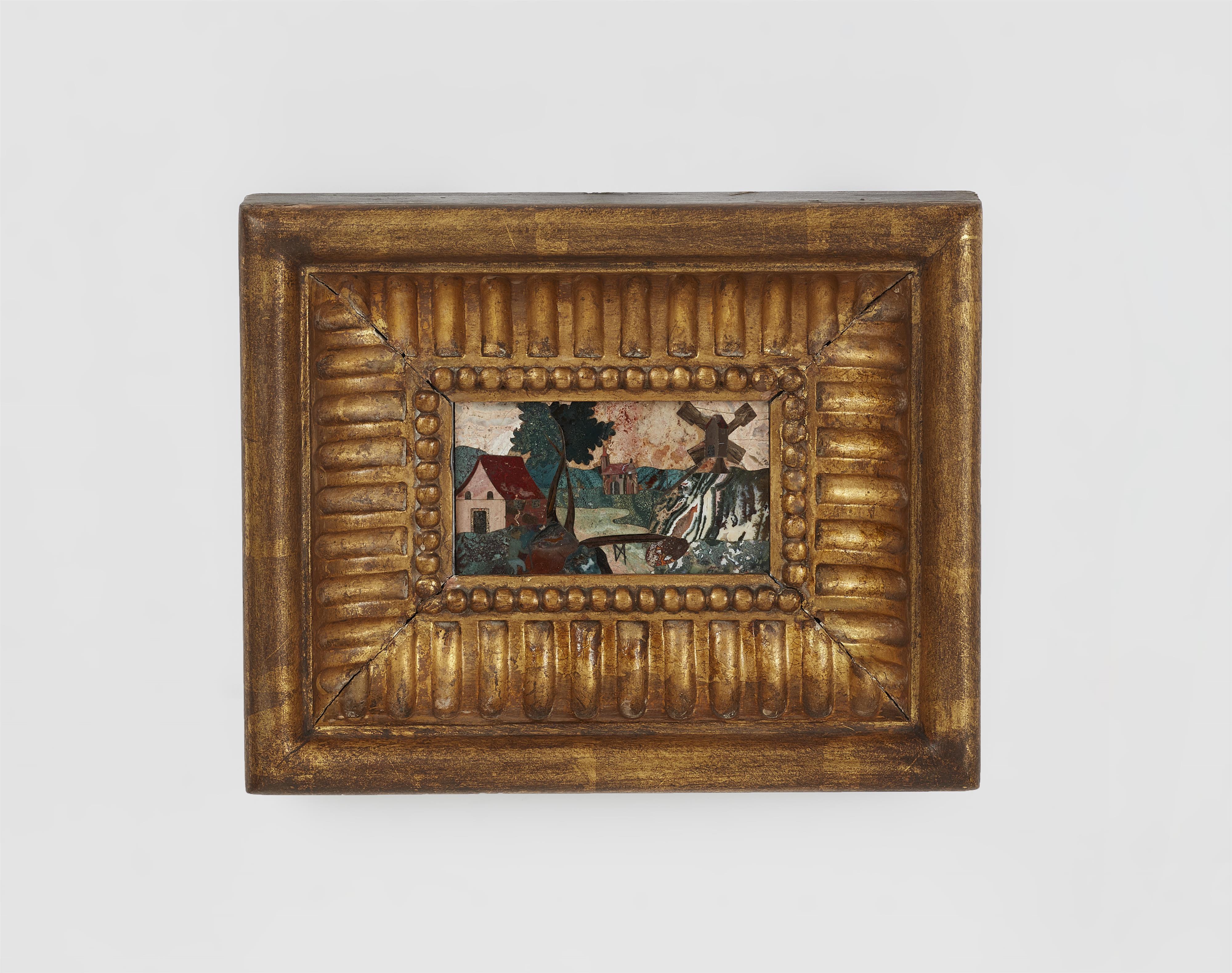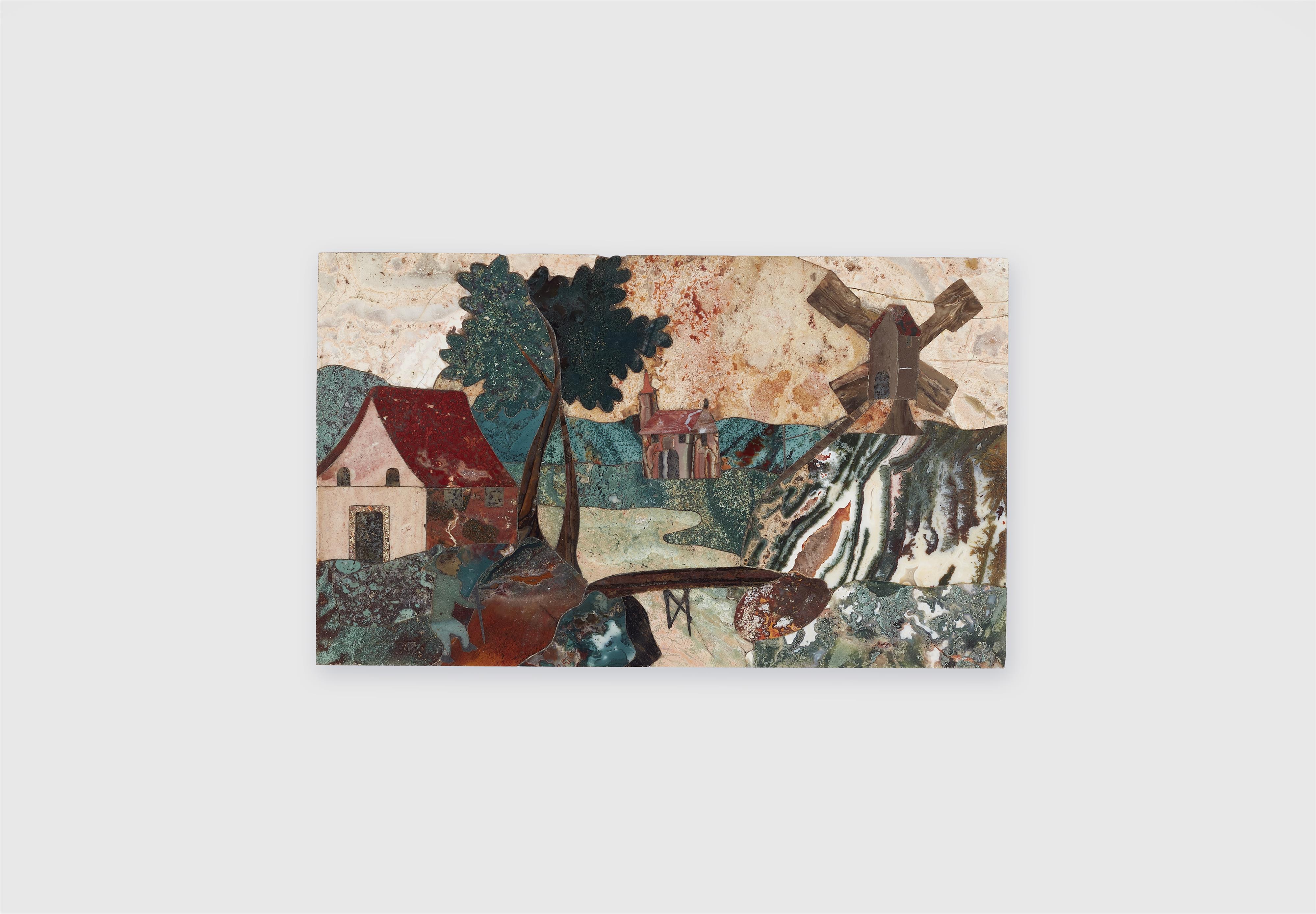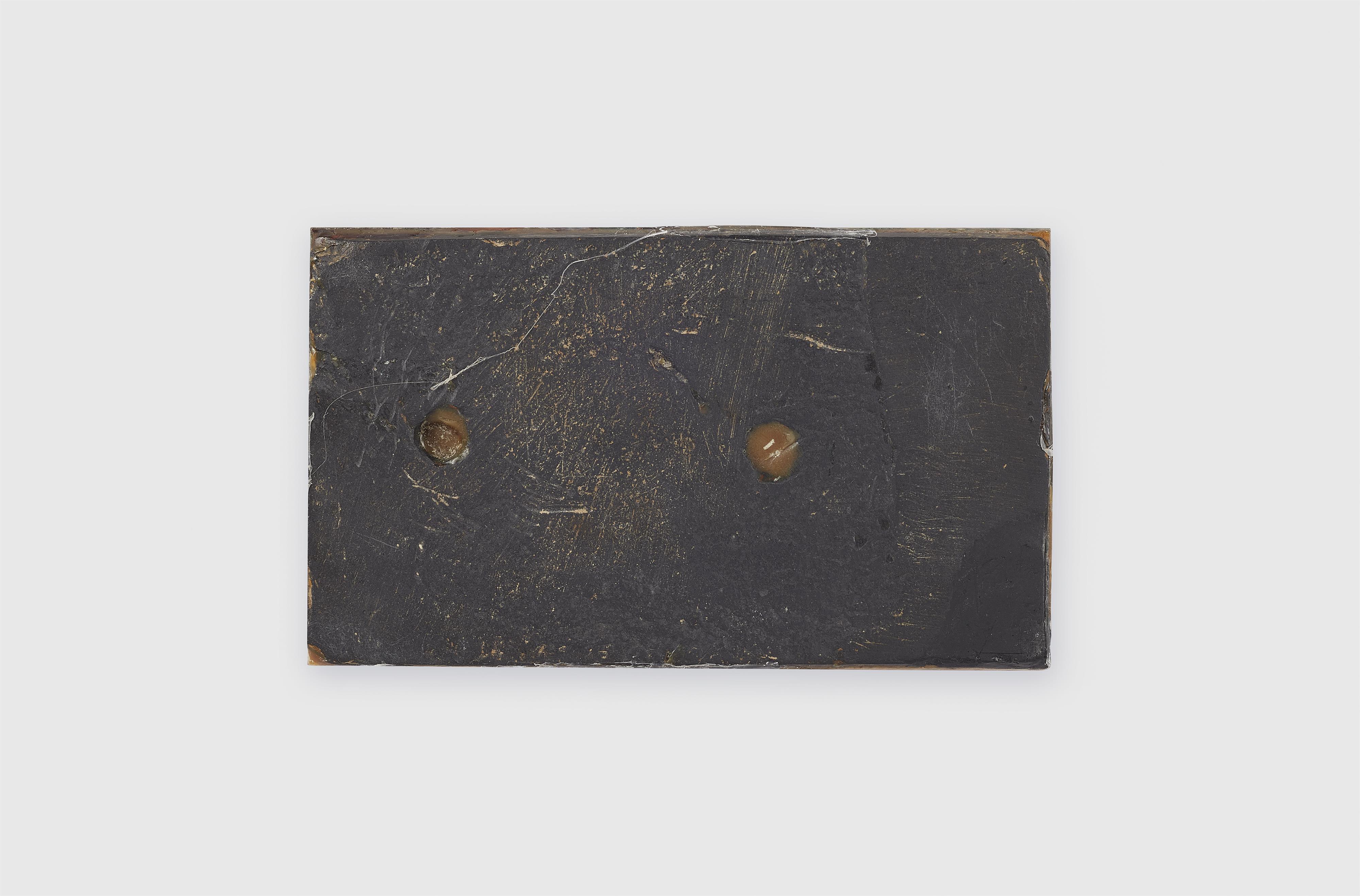River Landscape with a Windmill
An important stone inlaid miniature from the Castrucci studio
Hardstone marquetry in various marbles and semi-precious stones. H 6.5, W 9.5 cm. In a gilt fluted softwood surround, H 18, W 22.4 cm.
Prague, early 17th C.
In 1592, the Florentine stone cutter Cosimo Castrucci was appointed to the court in Prague. Emperor Rudolf II was a great lover of stone carving, cameos and commesso plates, and, like many of his contemporaries, convinced of the healing properties of stones. So it is understandable that the emperor wanted to engage the two greatest masters of their time, Cosimo Castrucci and Ottavio Miseroni, for his personal studio.
The first work signed and dated by Cosimo Castrucci for the Imperial Court in Prague is a panel that is now in the Kunstkammer of the Kunsthistorisches Museum in Vienna (inv. no. KK 3037). It is a small panel measuring 18.3 x 24.5 cm, proudly signed and dated on the reverse by Cosimo Castrucci. The museum owns three more panels, including a larger one depicting the Sacrifice of Isaac (KK 3411).
The charm of these panels lies, on the one hand, in the brilliant colours of the semi-precious stones and, on the other hand, in the precision of the stone cutting, which is reminiscent of precious jewellery. Castrucci used agates in various colours, Bohemian jasper and chalcedony, which were applied to slate as a support material, like in large commesso panels. There has been much speculation about his models, and it has been thought that he drew inspiration from works by Pieter Bruegel, Paul Bril, Pieter Stevens and Aegidius Sadeler in the imperial collection of engravings and paintings.
After Cosimo Castrucci's death around 1602, his son Giovanni, who was appointed royal chamber stone cutter in 1610, took over the Prague workshop. There is a fabulous commesso panel by him with a view of the Hradcany in Prague, which is also housed in the Vienna Kunstkammer. The courtly Prague lapidary workshop probably continued to exist for a few years after the death of the emperor in 1612 and was closed at the latest following the death of Ottavio Miseroni in 1624.
Provenance
From an important Italian collection.
Literature
Cf. Giusti, Pietre Dure and the Art of Florentine Inlay, London 2006, fig. 104 f.
On the Castrucci studio see. Distelberger, The Castrucci and the Miseroni: Prague, Florence, Milan, in: Koeppe/Giusti, Art of the Royal Court, New York 2008, pp. 29 ff.
See also ibid. fig. 35, the cabinet with similar inlays, Prague 1621 - 23, from the Liechtenstein Museum Vienna.
S.a. ibd. cat. nos. 66 ff.






